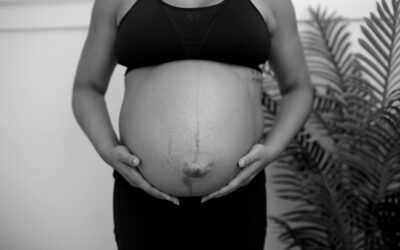Perineal tearing during a vaginal delivery can have varying levels of severity, and each woman’s tissue heals differently. While most perineal tearing heals on its own with stitching, there are times when the body can over heal and develop an excess of tissue at the wound site. This is known as granulation tissue.
What is granulation tissue?
Unlike healthy vaginal tissue, granulation tissue is often fibrotic and can cause local pain, inflammation, and bleeding. The presence of granulation tissue can also lead to pain and bleeding with intercourse, pelvic exam, or the use of tampons.
In the very initial phases of healing (prior to the common 6 week check up), this can be difficult to diagnose. Perineal tissue is commonly very tender during the initial postpartum recovery phase. However, if the tissue continues to feel raw, appear red and inflamed, and there is prolonged bleeding it is likely granulation tissue is present.
Silver Nitrate
If you are concerned that you might have some granulation tissue present, don’t be alarmed. It is treatable. In some instances this tissue heals and resorbs on its own, but occasionally it may require treatment from an OB/GYN. In these cases, the tissue is treated with silver nitrate.
Silver nitrate is a chemical compound used to debride and cauterize the granulation tissue to allow for normal healing, and reduce pain. In very rare cases, surgical removal of the granulation tissue may be required.
Slow Tissue Healing
There is no exact known cause for the formation of granulation tissue.
Some experts have found an increased incidence of granulation tissue in women who are treated with local, topical estrogen creams following a perineal tear or episiotomy. This treatment is usually recommended for women who have slow wound healing or wound dehiscence (a reopening of the wound). This is believed to be beneficial as in the early postpartum phases there is a drop in estrogen.
This decrease in estrogen can be more significant for those nursing or pumping. It can lead to tissue dryness and frailty which can slow tissue healing.
Topical estrogen is often prescribed to help promote local estrogen to the tissues and healing to the laceration. There has been some evidence of increased incidence of granulation tissue with this estrogen treatment. But is not the only cause. Sometimes this can occur as part of the natural healing process, or as the result of an undissolved stitch.
Stitches
Although the stitches used to close a perineal tear are dissolvable, sometimes the end of the stitch does not completely dissolve. The remaining piece of the stitch will then cause an irritation of the tissue and stimulate an excessive healing response in the tissue.
Oftentimes, the stitch will even begin to protrude from the tissue and the patient may be able to feel the stitch. This will require a visit to your OB/GYN to remove the remaining stitch. You may also require topical estrogen or silver nitrate for healing.
Speak up
If you are experiencing pain or spotting postpartum, or if you feel your perineum is slow to heal, mention it to your OB/GYN or pelvic PT. A quick exam can help determine if this is the case, and advise you on the appropriate treatment.
It is important to note that a perineal tear that has healed normally can also be painful. Oftentimes, scar tissue will form just along the vaginal opening where the tear was. This can lead to tissue restriction, limited blood flow, and pain (especially with intercourse or a pelvic exam). If you are having a hard time determining if your pain is from normal scar tissue or granulation tissue, below are some things to look for.
Normal perineal scar tissue:
- Tissue resistance to palpation along the area of the healing tear
- A “stretching” or “pulling” pain with intercourse or pelvic exam
- Potential difficulty with kegel contraction and pelvic floor relaxation
Granulation tissue:
- A bright red area of tissue at or very near the healing perineal tear
- A “raw” sensation with palpation to the involved area
- A “raw,” “tearing,” or “burning” pain with intercourse or pelvic exam
- Spotting or bleeding with wiping for hygiene, intercourse, or pelvic exam
- Potentially palpable piece of stitch along the area of inflammation
If you are experiencing symptoms that you feel might be due to normal perineal scar tissue, physical therapy can be very beneficial. Myofascial release techniques to the surrounding external tissues, and internal trigger point release to your pelvic floor muscles can be very helpful.
If you suspect that granulation tissue is the cause of your pain, see your OB/GYN prior to PT. Oftentimes, you will be placed on pelvic rest for about one week following a silver nitrate treatment. After that you will be able to resume intercourse and pelvic floor PT.
Try pelvic floor PT from home with the V-Hive
If you’re experiencing pelvic pain, tightness, or difficulty with healing, the V-Hive Membership might be the support you need. With tailored pelvic floor exercises and expert guidance, it’s designed to help you feel better from the comfort of your home. Take our quick quiz to find out how the V-Hive can help with your pelvic floor tightness and recovery.




